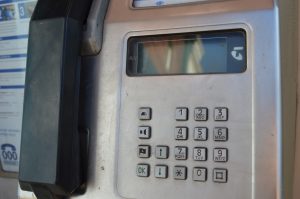Here is my first experiment – my first creation in Task Three! As previously stated in my prompt, the aim of these upcoming tasks was to apply the questions I have previously asked into the experiments that I have been conducting. As I recall, my aim was to essentially use my new-found perspective whilst also familiarising myself with the settings of the camera. I believe that I have achieved my initial goal into exercising this vision I had into the final product of my first experiment. I made it a point to notice these two things in particular: trees, plants and foliage in general and also the white objects. In terms of the process of making the video, I could ask myself a few questions:
Why did I choose this particular location?
In my situation, it was mainly for my convenience and the time I had. Within my immediate surroundings and/or the schedule I had for the day, I decided to utilise my surroundings as part of my experiment. Much like how Ivens describes how he observed the railroad bridge over the Maas River in Rotterdam, he described the place as a “laboratory of movements, tones, shapes, contrasts, rhythms and the relations between all these”. I decided to use the same state of mind that Ivens had used in order to capture what I needed for the experiment. It worked to my favour that my parents had travelled to Heidelberg on my day off and therefore, a new location where I had no familiarity was a good starting point to begin filming.
Why did I choose to notice these particular aspects?
My vision had already been finalised before filming – as I have said numerous times, I wanted to notice and record the environment with the two of these forms being the foliage and white cars. However, it eventually evolved into noticing anything that was essentially white (objects such as shoes, displays outside shops, store signs, etc) whilst still continuing to notice all types of foliage/plants.
The reason behind this sudden change from white cars to anything generally white was because in the midst of filming, I noticed that when I was attempting to capture white cars, my camera would always come across something that was already white and I thought that it would work more in my favour if I were to choose objects over cars. I mention the same thing in my audio recording.
The reason why I chose these two aspects to notice was that because it is something that I would not immediately look for or look at and therefore, motivated me to explore these aspects of our everyday lives. I still followed the theme of recording foliage/plants and how it interacted with the busy environment but essentially, it was about the correlation between white objects, its interaction with nature and vice versa. I decided that whilst also capturing what I noticed, I did an on-the-spot reflection (via voice recording) of what I was currently feeling about my work, the location and essentially, the evolution of my notcing:
This audio was mainly just about what I saw during my observation/recording and the current vision I had for my work at the time. Upon listening to this piece of audio recording, I thought to myself, “Why didn’t I include this as part of my final experimental product?” I think it was mainly because of my focus on the aesthetics and to be frank, there was nothing special or appealing about this audio reflection. I intended to use this audio mainly for my own reflections.
What is something that you could have done better/paid more attention to whilst capturing what you intended to notice?
In terms of critiquing my own work, I definitely think that I could’ve spent more time formulating a solid idea of what it is I wanted to capture – I could have avoided having that last minute decision of changing from white cars to white objects. Viewing my own work, I could have also definitely stayed in a single position instead of moving everywhere – this would have given me more time to practice and improve on my use of the camera as that was also one of my main goals in this experiment. Finally, I could have also prioritised my noticing over the convenience but unfortunately, it was not up to me to stay in Heidelberg for as long as I wanted.
Overall, I am quite pleased with how this video has turned out, it captured everything that I had intended to capture and is a good representation of the vision I had in mind. The alternating sequences between the plants and white objects also worked and definitely highlighted the two differences of these two aspects – even from the way the camera work was done on both, we could see a striking difference in both the plants and the white objects.
Now my next question for experiment II is,
What will you see when you capture the same aspects in the form of photography?
Lyreca.















